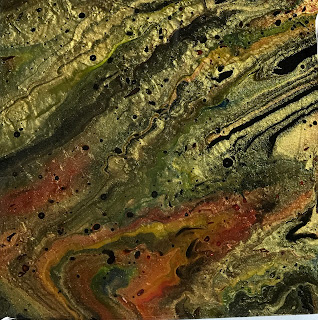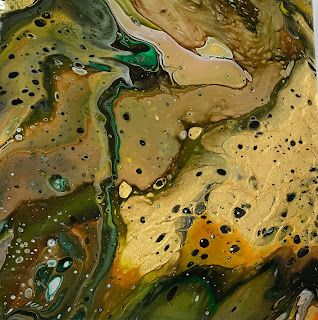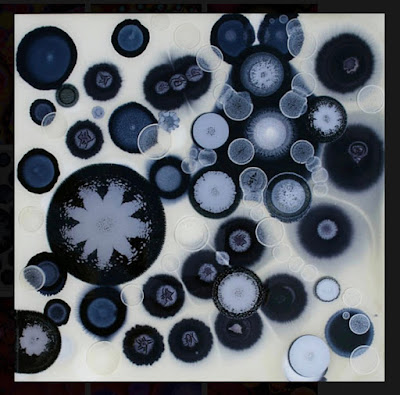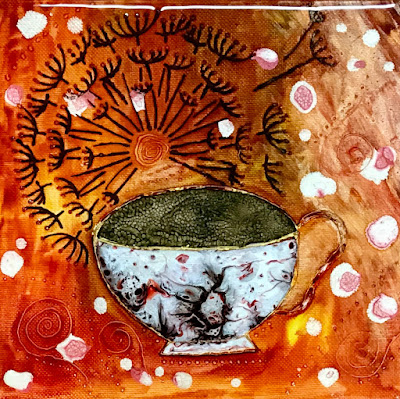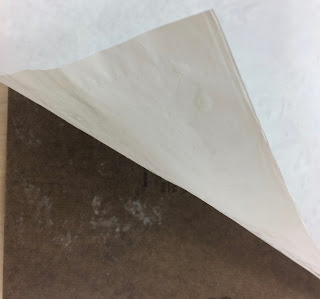Recently Elena, my studio buddy, and I spent an afternoon playing with Marabu Porcelain and Glass Paints™ and resin.
Our mission was to determine if these paints would work with resin using a similar process that I use when working with alcohol inks and resin, and to determine if these paints would work with the fluid or accidental painting process.
With EnviroTex Lite and EX-74, we got some interesting patterns. Here are two photos of some samples. The resins were freshly poured and the paints dropped in within 15 minutes. A few that had two colors were manipulated with a needle tool by drawing lines across the center sections. If waiting too long, the effect was not as pronounced. If dropped too soon, the paints dispersed more as in the bottom three images. The samples are on 2" square Ampersand Stampbord™ or Claybord.™
If you know my work, you know that I love trying to get interesting patterns using the chemical and physical properties of the inks and paints that I use. Although these patterns are very different (more pointy lines and not so many circles) than my regular patterns, I can see there are possibilities in jewelry and other small works. I doubt if I will be able to get large design elements since they dry fast when dropped into resin and that does not allow them to spread far.
We also used the Marabu Porcelain and Glass paints for pouring as fluid painters do. The paints mixed more than most acrylics that we have used resulting in a more muted palette, but we still got some designs that were suitable for coasters. Note: Photos were taken under a bright light so the colors would show well in a photo. They are a little more muted in natural light, but I don't know how to do that with photo editing.
I had a play day and demo day for the Carolina Mixed Media Art Guild members this past week-end in my studio. We had a blast pouring acrylic paints. With fluid or accidental painting, there is often a lot of waste left from a pour. I captured some from one painting and used the acrylic skins to make a few coasters that are shown in the first photo below. No waste in my studio! All of these are on Ampersand Claybord™. I wish I had photos to share with you of all the member's work, but I am the worst at taking photos when friends are in my studio!
And finally, we made a lot of small magnets demo left-overs from the pours. Some of these were made by turning the tile upside down onto dripped paint. Fun to see what can be obtained with drips of paint!
Hope you enjoy!









